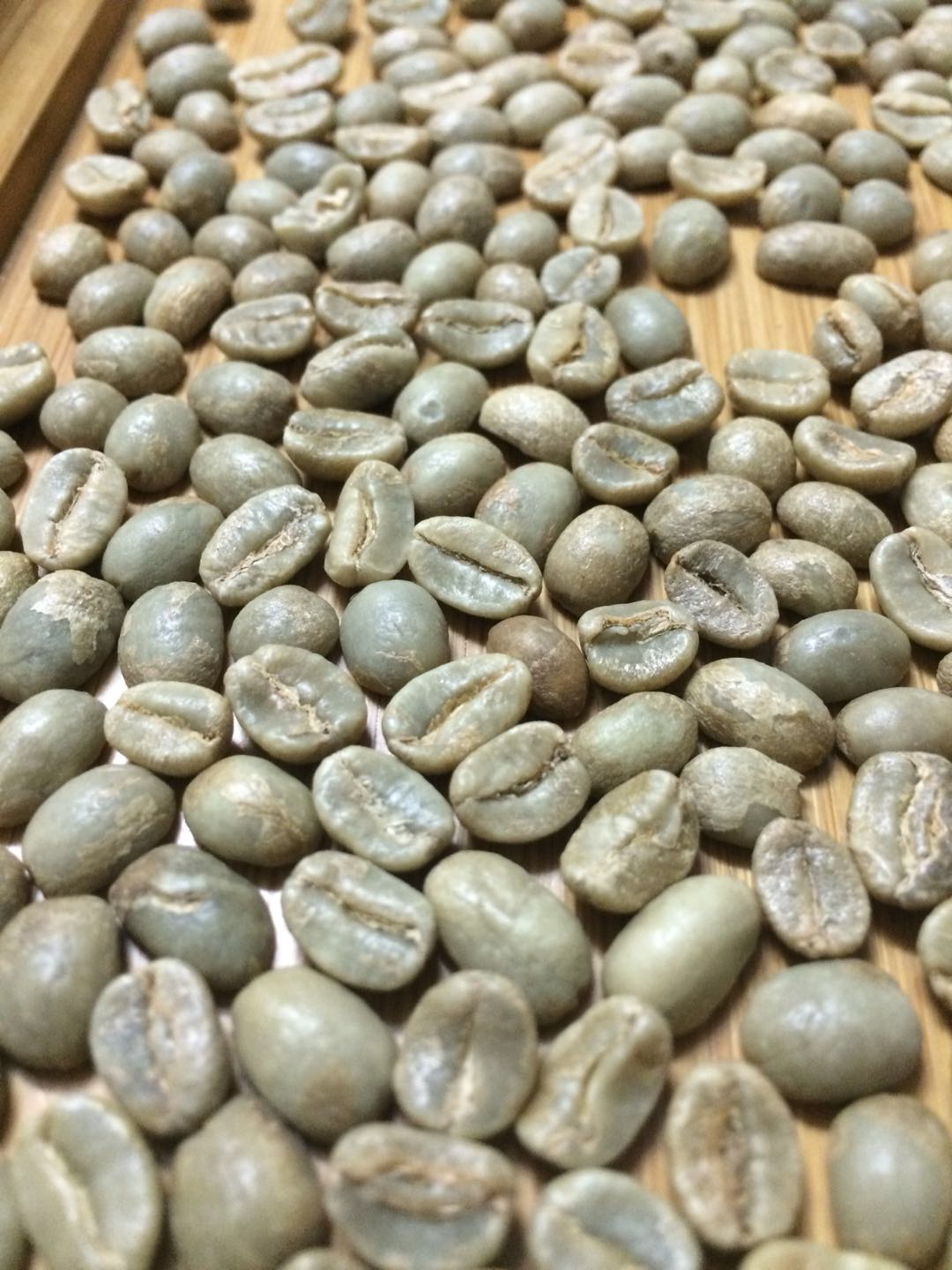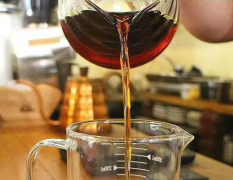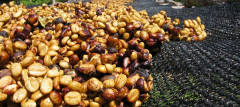Costa Rican Yellow Honey Fine Coffee beans introduction to Costa Rican Coffee
The coffee beans produced in the high latitudes of Costa Rica are famous in the world, and the coffee beans here are carefully treated-"honey treatment". Its advantage is that it can best preserve the original sweet flavor of coffee ripe fruit, which is why there is high-quality coffee. Located in the south of San Jose, the capital of Tarasu, Costa Rica is one of the most valued coffee growers in the country.
Tarrazu in Costa Rica is one of the major coffee producing areas in the world. The coffee produced is light and pure in flavor and pleasant in aroma. Costa Rica, with its fertile volcanic soil and good drainage, is the first country in Central America to grow coffee and bananas for commercial value. Coffee and bananas are the country's main exports. Coffee was introduced into Costa Rica from Cuba in 1729. Today, its coffee industry is one of the well-organized industries in the world, with a yield of 1700 kg per hectare. Costa Rica, with a population of only 3.5 million, has 400 million coffee trees, and coffee exports account for 25 per cent of the country's total exports. Costa Rica has also benefited from the establishment of the Central American Institute for Agricultural Research (IAAC) in Tarasu, which is an important international research centre.
High-quality Costa Rican coffee is called "extra hard beans". This kind of coffee can grow above 1500 meters above sea level. Altitude has always been a problem for coffee growers. The higher the altitude, the better the coffee beans, not only because the higher altitude can increase the acidity of the coffee beans and thus increase the flavor, but also because the night temperature at the higher altitude is lower, which can make the trees grow slowly, thus making the coffee beans have a stronger flavor. In addition, due to the high altitude drop caused by sufficient rainfall, is also very beneficial to the growth of coffee trees.

S.H.B. It is a very hard bean with an altitude of more than 1500 meters above sea level, which means high quality Costa Rican coffee. This extra-hard coffee bean suitable for medium and heavy roasting has a strong sour taste and charming aroma. Costa Rican SHG coffee is usually full of particles, clear flavor, bright acidity and ideal consistency. The strong flavor makes the tail rhyme reverberate in the throat for a long time, unforgettable.
Other coffees worth mentioning are JuanVinas,PR, H.Tournon, Windmill,SHB, Montebello and SsntaRosa. Fine coffee is generally grown in Geredia and the central canyon. Another striking type of coffee is Sarchi (one of the five towns that represent Costa Rica's Coffee Road), which grows on the slopes of the PoasVolcano volcano, 53km from San Jose. Saatchi, founded in 1949, has a land area of 30770 hectares and grows sugar cane and coffee. The area is also famous for its handicrafts, attracting tourists from all over the world.
Costa Rica has a long history of cultivating coffee, but in the past 10 years, the new method of "dry" treatment has become fashionable, collectively known as "honey treatment". The function of using the scraper to adjust the scraping degree of the pulp, the output presents a "honey feeling" from light to strong with the color from light to deep (white, yellow, red and white, yellow, red and black), with acidity and complex aroma. Each has its own depth and advantages. Located in the Naranjo producing area of the western West Valley region, the Herba processing Plant (Herbazu) is well known because it not only has its own coffee plantation, but also processes and produces raw beans for nearby estates and small coffee farmers.
Yellow honey treatment: about 40% of the pectin is removed; the drying method requires the most direct heat absorption, receives the most light drying, and lasts for about 8 days to reach a stable water content.
Costa Rican coffee has always been regarded as a perfect type of classic flavor, balanced, clean and mild is its tone. This batch of Yersalo processing plant in the western valley region is famous for its excellent natural geographical conditions and excellent regional planting management techniques. the almost perfect classical flavor has a lively citrus flavor in acidity, BlackBerry fruit aroma, acidity and texture, melons and sweet taste smooth taste. Drupe / micro-flower aroma, while the finish has a significant coffee flower aroma, is a taste of coffee full of Latin country style.
Cup test flavor: Brown sugar, flowers, almonds, black tea, oranges and sweet spices, mild acidity, syrup taste, good finish.

Important Notice :
前街咖啡 FrontStreet Coffee has moved to new addredd:
FrontStreet Coffee Address: 315,Donghua East Road,GuangZhou
Tel:020 38364473
- Prev

Wonderful fruit-flavored coffee Kenya boutique coffee
It entered Kenya in the 19th century, when Ethiopian coffee drinks were imported into Kenya through southern Yemen. But it was not until the early 20th century that the bourbon was introduced by the St. Austen Mission (St.AustinMission). Kenyan coffee is mostly grown at 15002100 meters above sea level and is harvested twice a year. To ensure that only ripe berries are picked, people must be in the forest
- Next

Comparison of flavor of Costa Rican coffee beans treated with Costa Rican honey
The coffee beans produced at the high latitudes of Costa Rica are famous in the world, full-bodied, mild in taste, but extremely sour. The coffee beans here have been carefully processed, which is why they have high quality coffee. Located in the south of SanJos, the capital of Tarasu, Costa Rica is one of the most valued coffee growers in the country. The history of coffee cultivation in this area
Related
- Detailed explanation of Jadeite planting Land in Panamanian Jadeite Manor introduction to the grading system of Jadeite competitive bidding, Red bid, Green bid and Rose Summer
- Story of Coffee planting in Brenka region of Costa Rica Stonehenge Manor anaerobic heavy honey treatment of flavor mouth
- What's on the barrel of Blue Mountain Coffee beans?
- Can American coffee also pull flowers? How to use hot American style to pull out a good-looking pattern?
- Can you make a cold extract with coffee beans? What is the right proportion for cold-extracted coffee formula?
- Indonesian PWN Gold Mandrine Coffee Origin Features Flavor How to Chong? Mandolin coffee is American.
- A brief introduction to the flavor characteristics of Brazilian yellow bourbon coffee beans
- What is the effect of different water quality on the flavor of cold-extracted coffee? What kind of water is best for brewing coffee?
- Why do you think of Rose Summer whenever you mention Panamanian coffee?
- Introduction to the characteristics of authentic blue mountain coffee bean producing areas? What is the CIB Coffee Authority in Jamaica?

